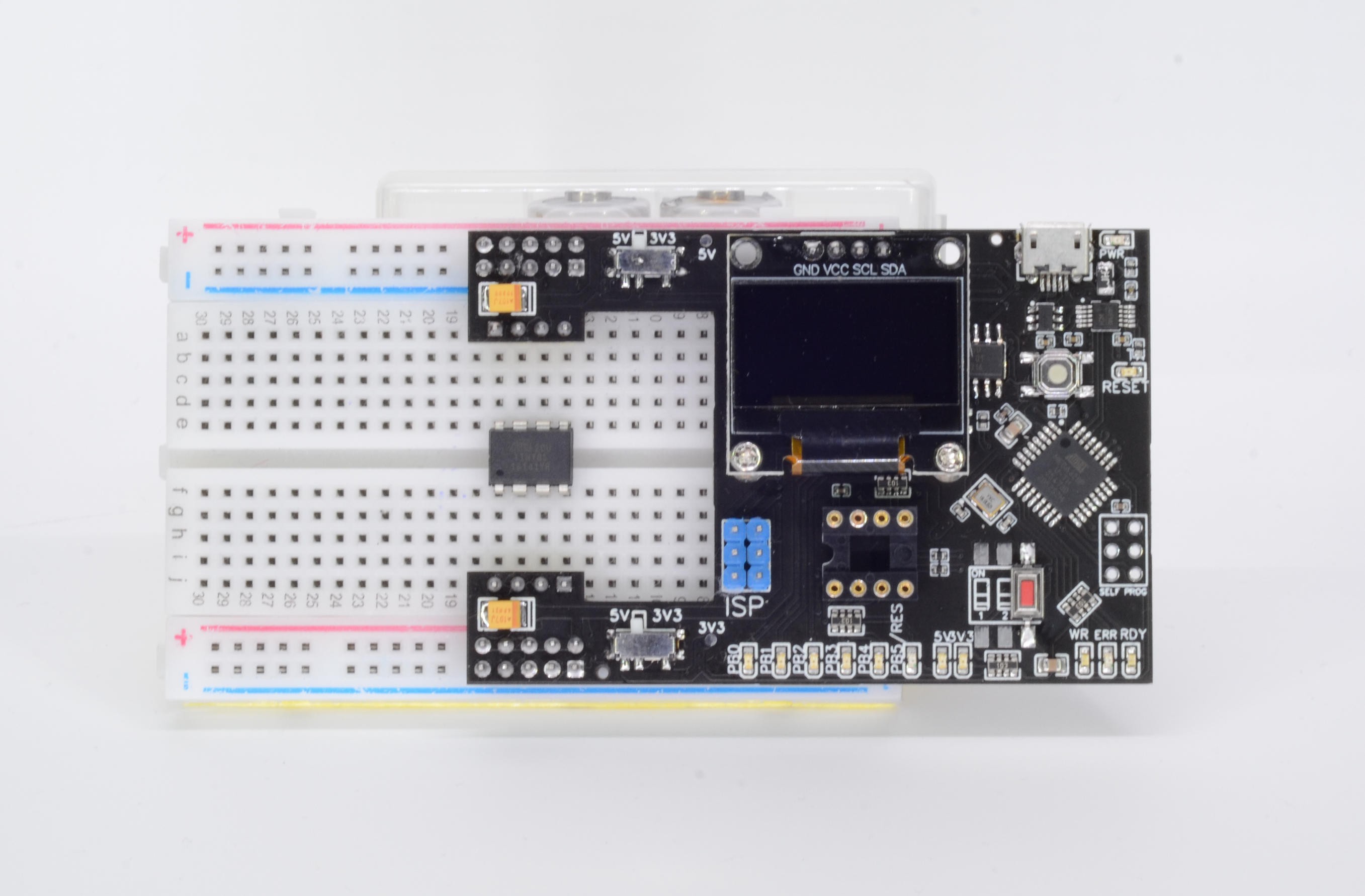Since the previous record many things have happen. I did some additional optimization of the board to hit few targets
- I definitely want to have a high voltage programmer onboard (that's quite tricky as turns out)
- I want to prepare my board for possible mass production, therefore I've abandoned 'motherboard' design and installed onboard MCU
- Few small improvements here and there
Why would you need high voltage programmer? Smaller ATtiny's have just 5 usable GPIOs, but you can program reset pin to be 6th GPIO as well. the only problem is that you cannot use it for programming anymore. Therefore there is a special routine that allows you to reprogram such MCU by applying 12V to reset pin and using special protocol to update firmware.
Apart of necessity to have high voltage onboard (which is an easy part) you have to hire one more TINY pin to perform high voltage flashing, but worst part that pins that used for normal ISP programming are used in other directions in high voltage programing mode. This makes buffer IC useless, since it would block signal from TINY to host.
Solution that i came up with is to drop 74HC125 quad buffer and hire 74HC241 octa-buffer instead. 4 of the channels I will use for normal programming and 4 more for high voltage.

Picture above shows revision D, where i have high voltage circuitry, but i didn't manage to run it properly. So one more revision to come with above changes.
 andriy.malyshenko
andriy.malyshenko
Discussions
Become a Hackaday.io Member
Create an account to leave a comment. Already have an account? Log In.